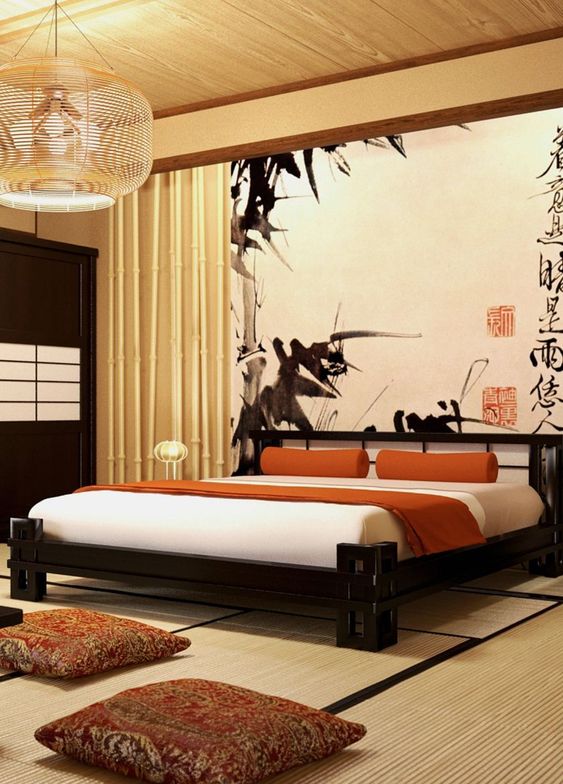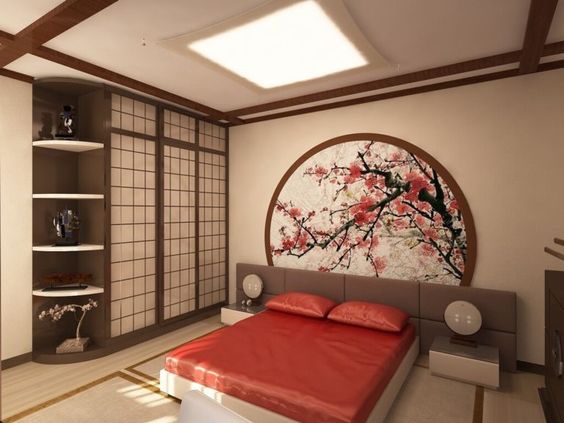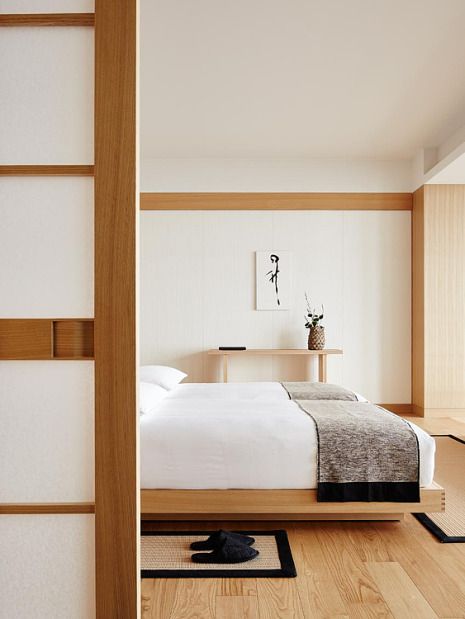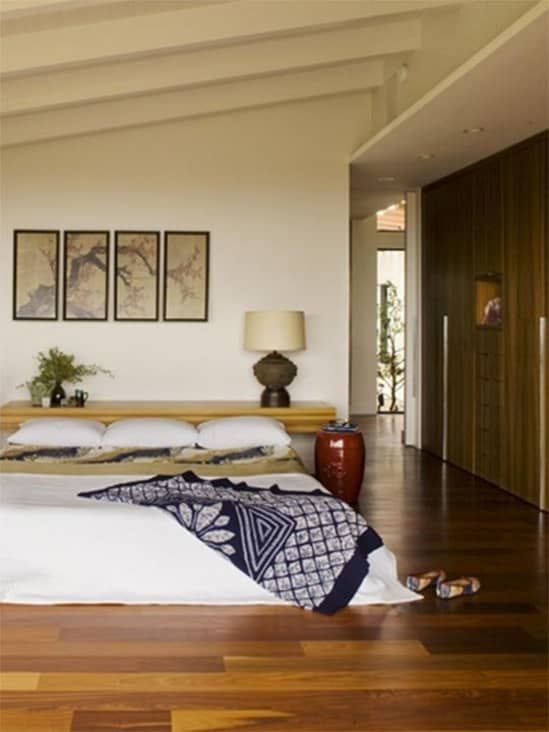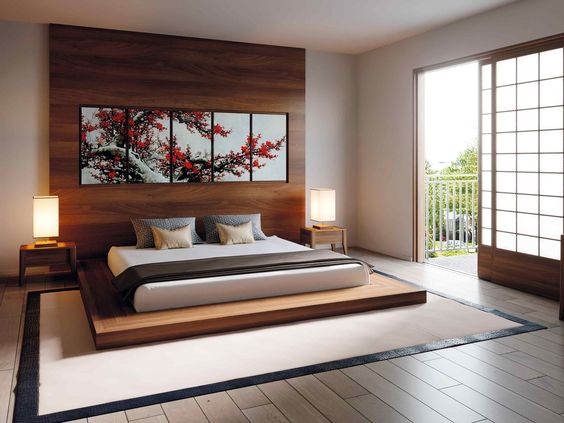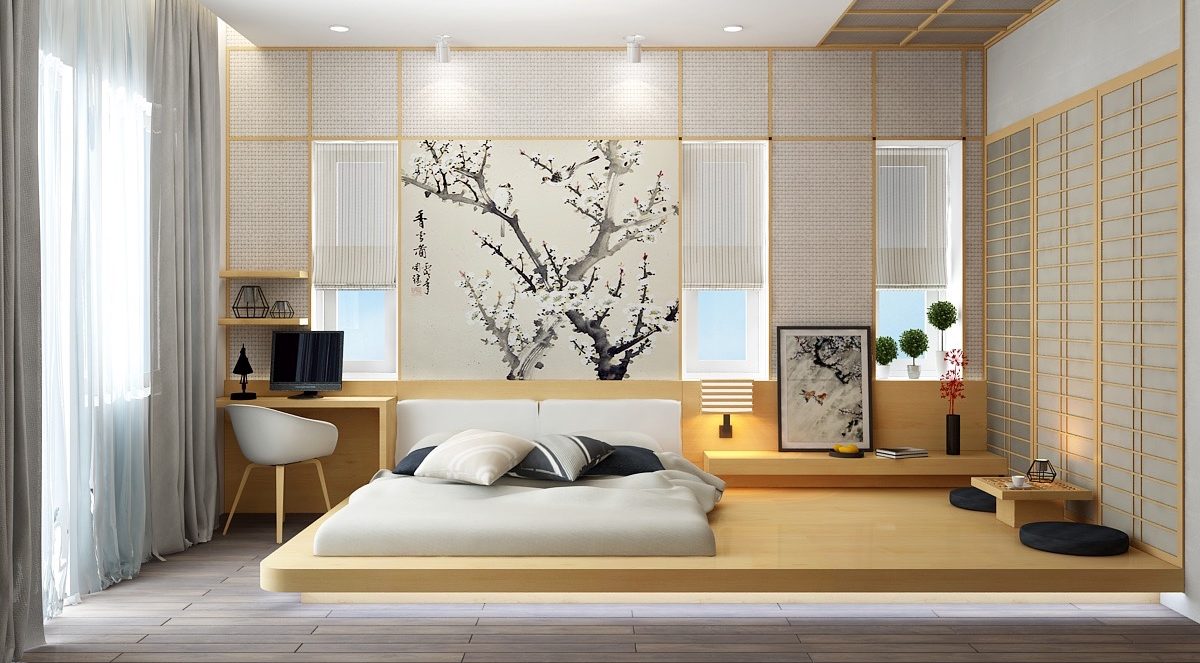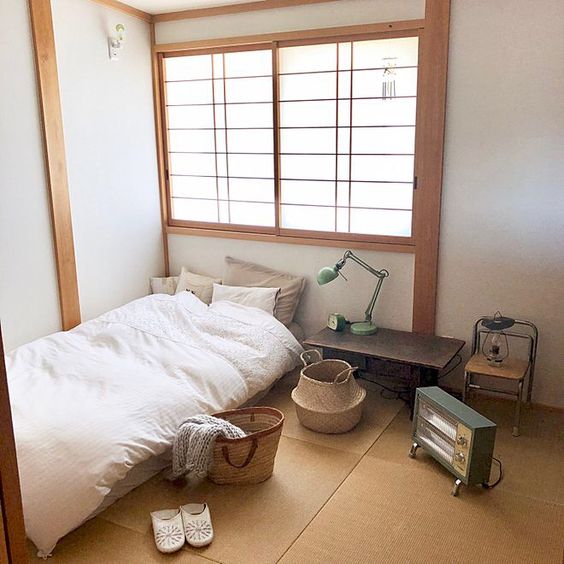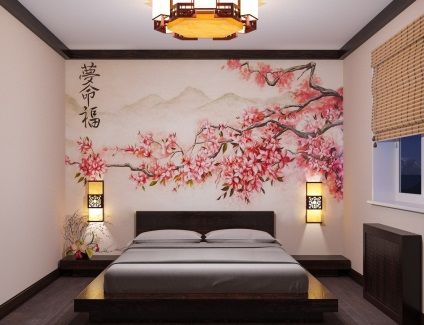Japan is the eleventh most populous country in the world with over 300 million people. This Asian island country is famous for its beautiful landscapes, diverse culture, and friendly people. Moreover, Japanese are also famous for their delicate senses of minimalism, cleanliness that appear in their own house. The Japanese interior always follows the basic principle of creating a simple yet functional space which might just be what people need in nowadays modern world. Scroll through this article to find out how to design a Japanese bedroom with particular ideas to get inspired for your retreat cocoon.
Table of contents
Particular principles of Japanese bedroom
Japanese bedrooms are created by using natural materials, getting rid of unnecessary items, and following simple shapes and colors. Whether it is traditional or modern Japanese style, it mainly focuses on the “less is more” concept that delivers minimalism into the space while keeping it airy, peaceful and serene. Here are some basic rules to follow when designing a Japanese bedroom:
Basic color palette

Since the bedroom is a space to stay calm and restful, it should be decorated with a warm color palette. Especially, when it comes to Japanese style, consider taking what is outside into your room! For example, brown from the wood, green plants, white and pale blue of the cloud and sky, gray coming from stone. These are all simple and light hues that blow an artistic yet tranquil feeling to enhance rest-and-sleep experience.
Natural materials

In Japan, people make use of natural materials such as wood, pine, cedar, bamboo, stone. These materials are woven in through decorations and furniture in Japanese style bedrooms due to its durability and pragmatic function and still giving the simplicity and serene tones of the Zen atmosphere.
Decluttered layout

There is no doubt that Japanese bedrooms are the most tranquil, relaxing space that can be used for meditation and healing after a long day outside. To take advantage of those traits, space layout needs to be neat therefore one of the basic rules of a Japanese bedroom is decluttering. Everything that does not belong to the bedroom should not be taking up the space. Just with a single bed, few lighting fixtures and a nightstand are all you need to achieve the free state of mind.
Allow (abundant of) sunlight
Creating a space flooded with sunlight is one of the basic rules in a Japanese resting nook. Large Shoji screen windows with sheer curtains or bamboo shades can be a perfect duo to incorporate bright and shine natural light into the room. You will immediately feel the refreshing air and hygge spread all over your cozy cocoon.
Low furniture
Most traditional houses in Japan have a low ceiling height. This special tenet is due to the tradition of sitting on the floor which may be uncommon in Western countries. This leads to the special trait of using low furniture in Japanese bedrooms. From the beds, the chairs to the desks and drawers, everything is low-key shorter than usual, which makes this style unique from the others.
Signature decorations
Tatami mats
As most of us already know, in Japanese homes, people avoid wearing any footwear in the room. Therefore, to keep your barefoot experience as comfortable as possible, the Japanese have come up with a special mat made of pressed rice straw covered with bamboo cane called tatami mats.
These Tatami mats are light, thin and soft. They give your feet warmth in the winter and coolness during the summer and when you walk on it, you will feel like your feet are being gentled.
While the price of these mats are very expensive, people usually cut them into smaller pieces and only cover the floor of important space of the bedroom such as around the bed area.

Shoji
Shoji is known as a traditional interior in many Japanese homes. Shoji screen is a sliding outer or inner door made of a latticed screen covered with white translucent rice paper. The white paper on Shoji provides more privacy while lowering the light’s intensity from the outside. For the bedroom, Shoji is mostly used as doors or windows, but it can also be made into unique room dividers. Nowadays, although Shoji still keeps its own original form, it has been redesigned with functions and size that meet the needs of Western modern bedrooms.
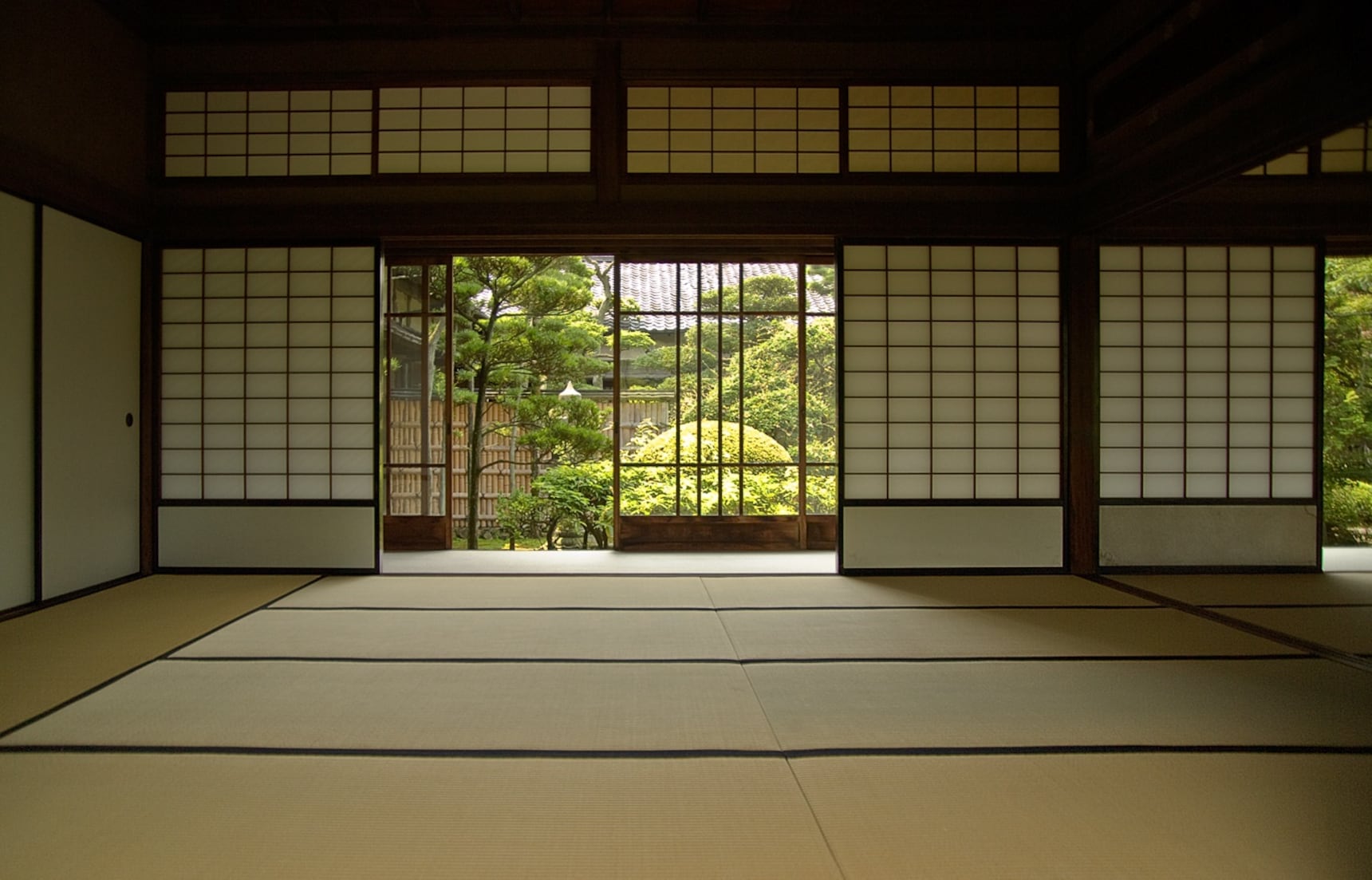
Fusuma
Similar to Shoji, Fusuma is also a traditional sliding door or indoor panel to cover a private area or divide the space. The biggest difference between them is while Shoji is covered with translucent paper, Fusuma is a full scale surface of fabric or paper (without latticed frame). Furthermore, instead of a plain white paper, Fusuma is covered with paintings or artworks so it’s more aesthetic when being used as decorating.

15 jaw-dropping Japanese bedroom ideas to simply elevate your space
